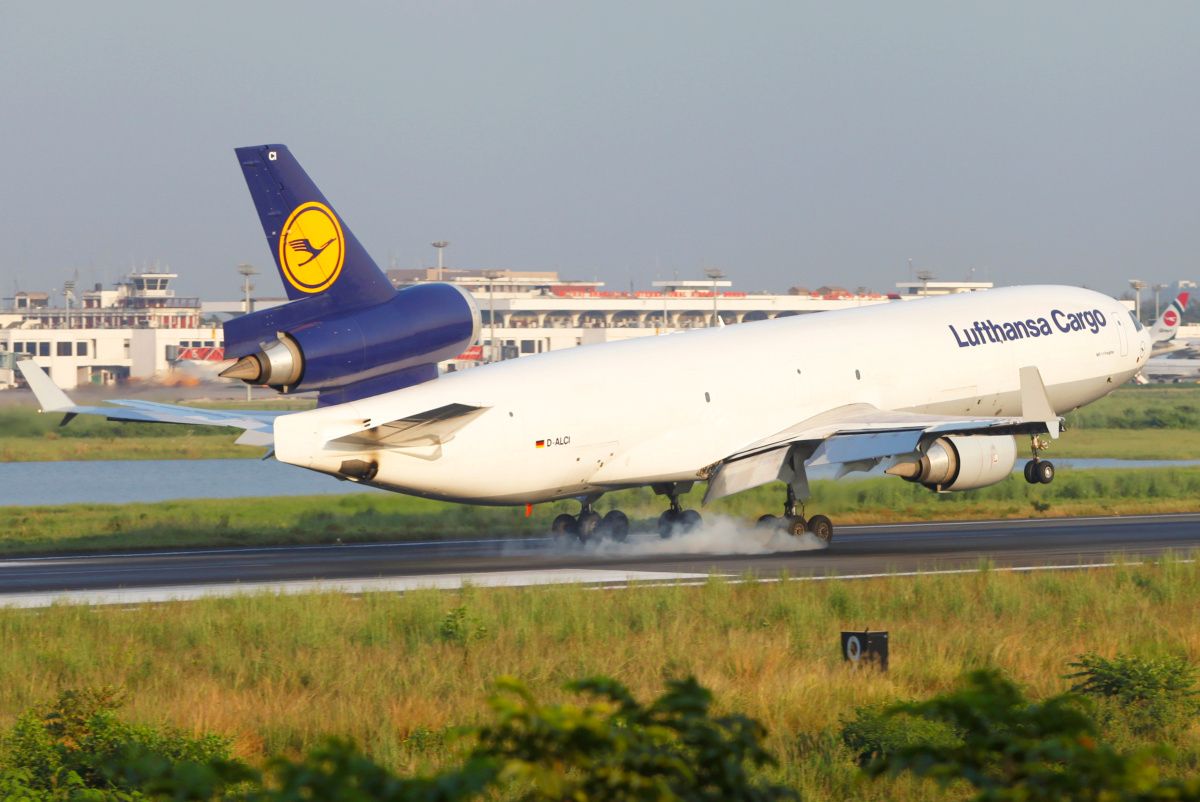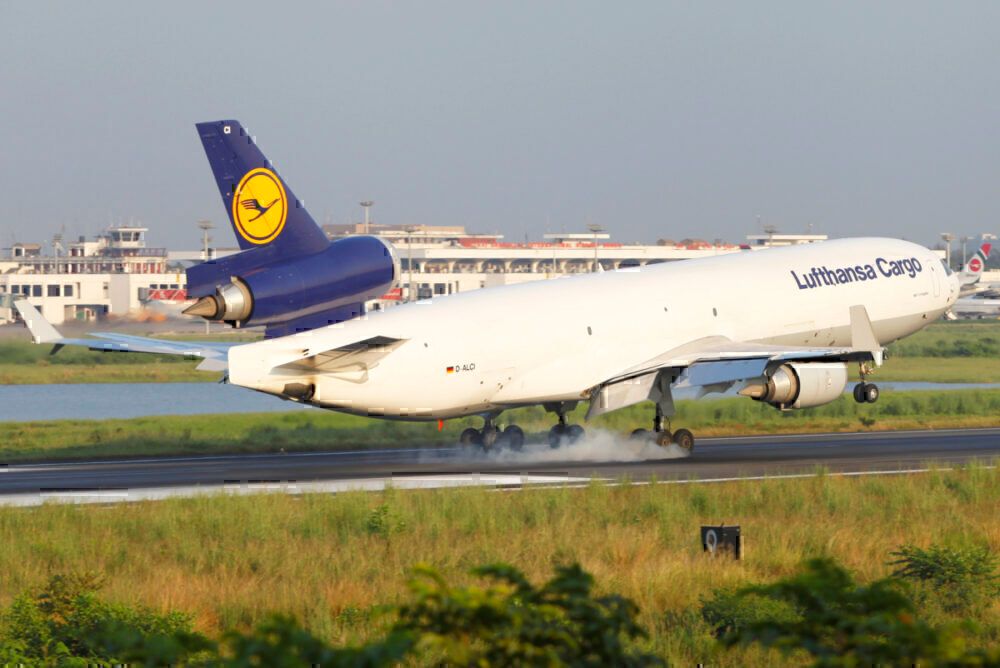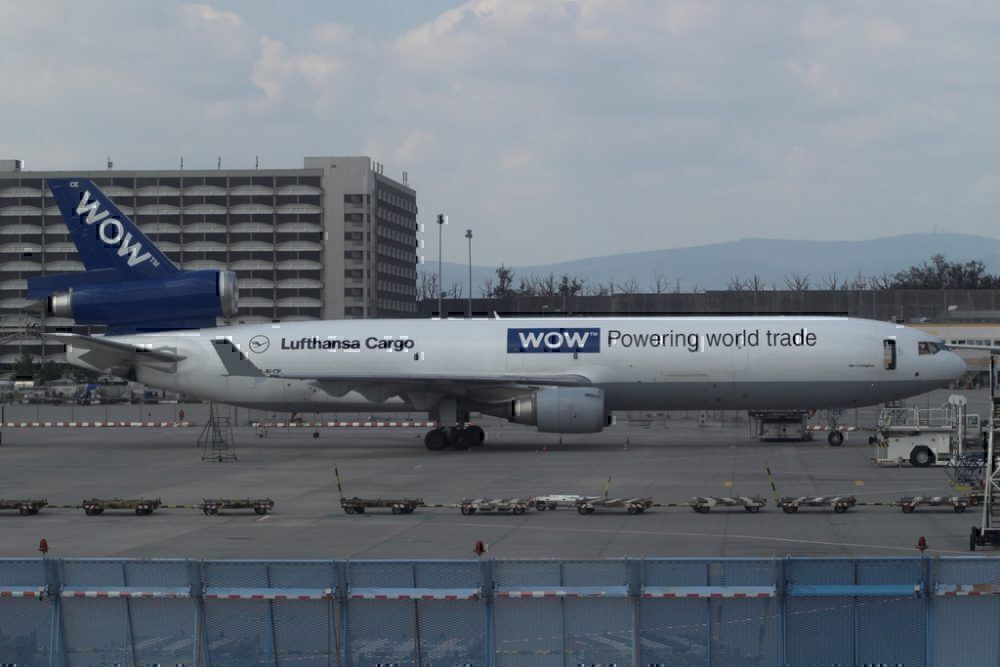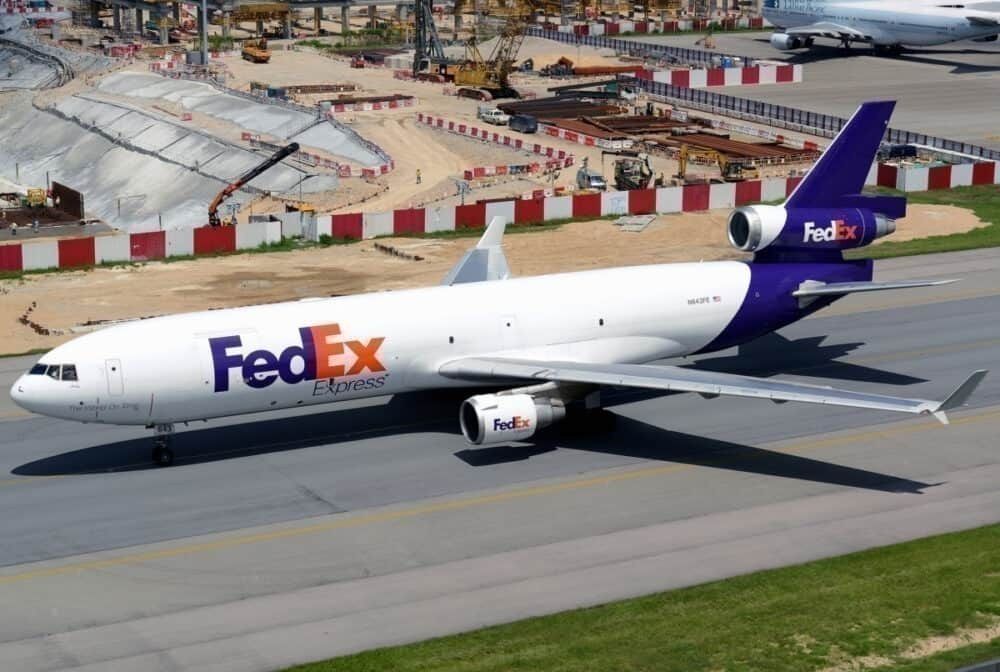In a previous article, we discussed how the McDonnell Douglas MD-11 went head to head with the Airbus A340. However, the Airbus A340 was also in competition with the Boeing 777. If the MD-11 had gone up against the future 777, what would it have been like? Let's explore.
How will we compare the two aircraft?
To accurately compare these aircraft, we will assume that we are an airline looking at buying one or two of either aircraft. We will need to understand economics and how useful each aircraft type is for our carrier goals. Thus while one jet may have a better passenger experience, it may not be better for our bottom line (for example, the Airbus A380 with its extra room is fantastic for passengers - yet not very good when it comes to fuel consumption).
The Boeing 777-200 is the closest in terms of capacity to the MD-11 and will be the primary aircraft in the series compared.
Stay informed: Sign up for our daily aviation news digest.
Passengers
The MD-11 can seat up to 298 passengers in a three-class configuration (with 16 in first-class + 56 in business and 226 in economy). If configured for a two-class modern configuration, the MD-11 can seat 323 passengers with 34 in business and 289 in economy class. Lastly, if the aircraft is exclusively economy, it can seat 410 passengers.
As for the Boeing 777, there are several variants that we have listed below:
Boeing 777-200 can seat 305 passengers in a three-class configuration (24 in first class, 54 in business class, and 227 in economy). In a two-class configuration, the aircraft will sit 313, or if all-economy, 440 passengers.
The bigger Boeing 777-300 can carry 368 passengers in a three-class configuration (30 in first class, 84 in business class, and 254 in economy class). If configurated for a two-class layout, the aircraft has 396 seats and an enormous 550 if all-economy class.
The Boeing 777-300ER and 777-200LR have slightly reduced seating capacities, but only by a few seats.
Looking at the numbers, we can say that the 777 series can seat more passengers, with the 777-300 having so much more room onboard than the MD-11 (which makes sense as the 777-300 is over ten meters longer). When it comes to the 777-200, it can seat more in a three-class layout, and more in an all-economy layout. Interestingly the MD-11 seems to beat it in a two-class layout, which doesn't look to make much sense without judging the airline's interior fit-out.
Winner: Boeing 777-200
Range
When it comes to comparing the range, things get very interesting. As there are multiple extended-ranged Boeing 777 aircraft (extended range and long-range), we will focus on the original Boeing 777-200 and Boeing 777-300 (as they came out first and would have been in the market the same time as the MD-11).
The MD-11 has a range of 6,725 nautical miles (12,455 km).
The Boeing 777-200 has a range of 5,240 nautical miles (9,700 km), with the Boeing 777-300 has a range of 6,030 nautical miles (11,165 km).
In terms of range, the MD-11 comes into its own and beats off the competition. Boeing had to release an updated extended-range version of both these aircraft to possibly compete (and even then, the ER versions were only slightly longer by a few hundred nautical miles to the MD-11).
Winner: MD-11
Two engines vs. three engines
Comparing the two aircraft is challenging because the MD-11 has three engines, and the Boeing 777 has only two. Let's examine the fuel burn to see how they compete.
- The MD-11 has a fuel capacity of 38,615 US gal / 146,173 L, 258,721 lb / 117,356 kg
- The Boeing 777-200 has a fuel capacity of 31,000 US gal / 117,340 L / 207,700 lb / 94,240 kg
- The Boeing 777-300 has a fuel capacity of 45,220 US gal / 171,171 L / 302,270 lb / 137,460 kg
As they fly different ranges, we need to factor in the actual fuel burn per nautical mile.
- The MD-11 burns 7500-7750 kg/h
- The Boeing 777-200 burns 6200 kg/h
Three engines are more energy-intensive than two engines. And we have not even mentioned the time difference to maintain and repair two engines over three engines (and cost of additional spare parts).
Winner: Boeing 777-200
Bottom line
The Boeing 777-200 can carry around the same passengers and costs less to operate. It would be beaten by the MD-11 when it came to the range until the 777-200ER improvement came out.
Of course, the MD-11 would hold its own because two-engined aircraft were not allowed to fly over the ocean. That was until ETOPS - leaving the MD-11 with no advantage.
What do you think? Let us know in the comments.





